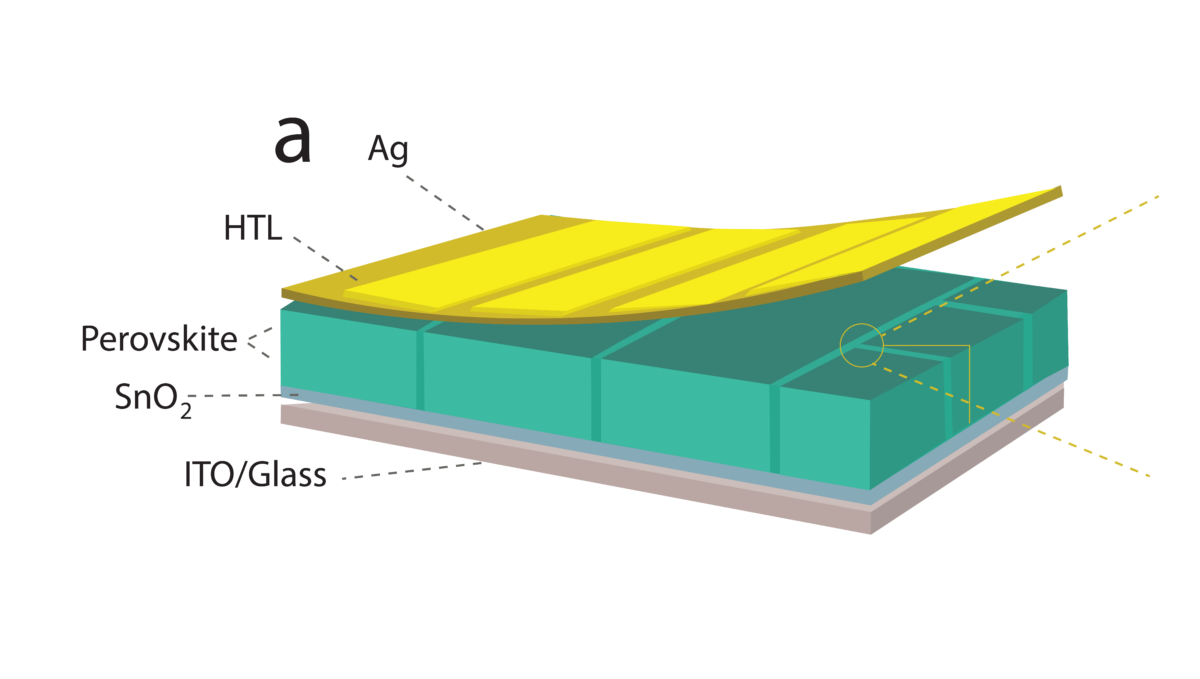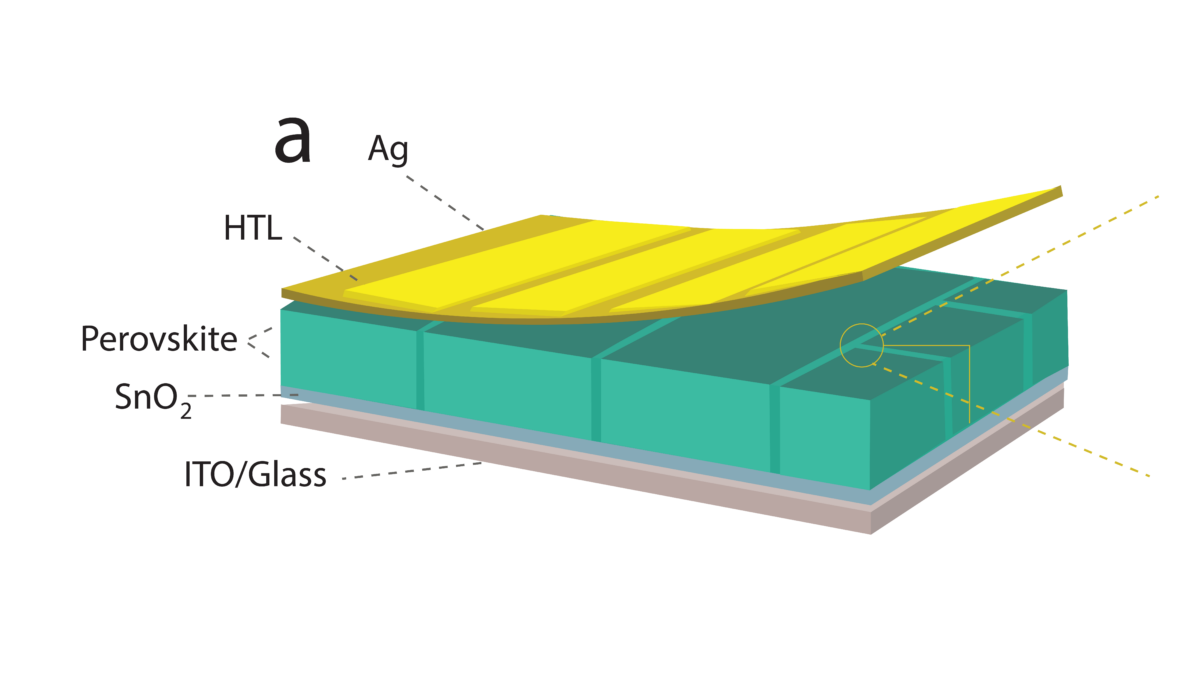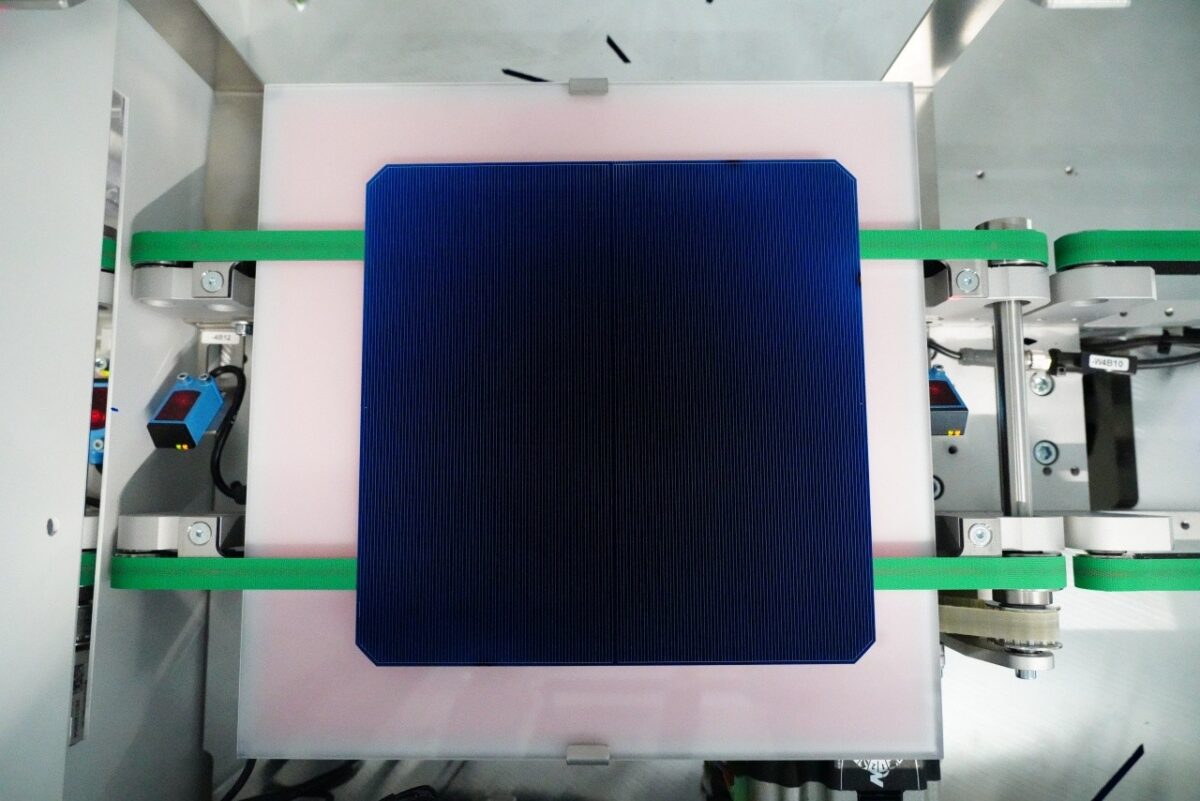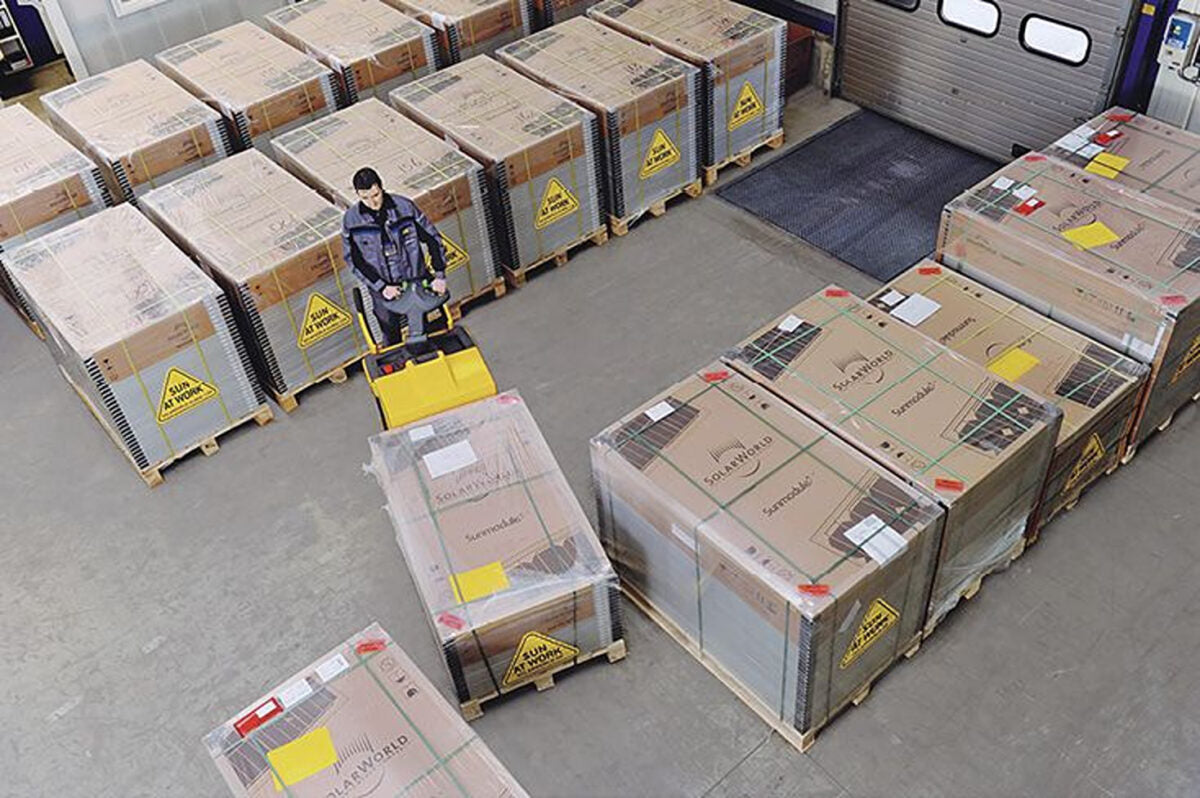Perovskite solar cell based on self-disintegrating seeds achieves 23.73% efficiency, 83.64% fill factor

Schematic of the solar cell
Image: pv magazine
Researchers in China claim to have achieved one of the highest fill factor values for a perovskite solar cell by reducing its nonradiative recombination and residual stress through what they called a self-disintegrating seed strategy.
“This strategy achieved a synergistic effect of morphology optimization, interface modification and stress releasement through functional cations released from seed,” the research's lead author, Qianyu Liu, told pv magazine. “While the seed in the perovskite precursor has been shown to induce perovskite grain growth and increase grain size, previous studies have primarily focused on regulating perovskite crystallization and morphology. However, for perovskite solar cells, the issues of defects at the interface and residual stress within the film are equally critical and challenging to address using conventional seeding strategies.”
The scientists sought to overcome the limitations of the seeding strategy by using a perovskite material known as 2D (4-FBZA)2PbI4, which embeds a self-disintegrating seed to enhance the crystallization process of the perovskite film. “This material can bind with lead iodide (PbI2), providing large-size nucleation centers for perovskite grains, thereby enhancing grain size and crystallinity,” Liu added.
“Through X-ray photoelectron spectroscopy, Kelvin probe force microscopy, density functional theory calculations, and other characterizations, we show that (4-FBZA)2PbI4 disintegrates during perovskite grain growth, releasing 4-FBZA+,” Liu further explained. “Simultaneously, 4-FBZA+ migrates to the interface, passivating defects, and stabilizing the perovskite lattice through interactions with FA+ and [PbI6]4-, achieving interface modification of perovskite films.”
According to the research team, the self-disintegrating seed releases harmful tensile stress in the perovskite film, improving carrier lifetime and promoting hole transport.
The scientists designed the cell with an indium tin oxide (ITO) substrate, an electron transport layer (ETL) based on either tin oxide (SnO2), the perovskite absorber, a hole transport layer (HTL) relying on Spiro-OMeTAD, and a silver (Ag) metal contact.
Popular content
Tested under standard illumination conditions the device achieved a power conversion efficiency of 23.73 %, an open-circuit voltage of 1.133 V, a short-circuit current density of 25.21 mA cm 2, and a fill factor of 83.07 %. For comparison, a reference device designed without the proposed self-disintegrating seed strategy achieved an efficiency of 22.73%, an open-circuit voltage of 1.117 V, a short-circuit current density of 24.78 mA cm 2.
“Devices prepared using this strategy exhibit commendable long-term humidity stability, with unencapsulated devices retaining 90 % of their initial PCE after aging for over 2000 h in the air with 60 % relative humidity,” the research group explained.
The new solar cell concept was presented in the study “Perovskite solar cells with self-disintegrating seeds deliver an 83.64 % fill factor,” published in Nano Energy. “This study extends the seed strategy to address interface modification and stress releasement, addressing the shortcomings of traditional seeding approaches and expanding seed research in the field of perovskite solar cells,” Liu said.
The research group comprised academics from China's Southwest Petroleum University, the Chongqing University, the National Center for Nanoscience and Technology, and Chinese solar module maker Tongwei Solar Co., Ltd.
This content is protected by copyright and may not be reused. If you want to cooperate with us and would like to reuse some of our content, please contact: editors@pv-magazine.com.




